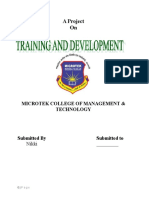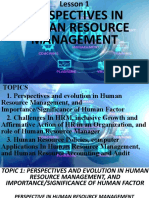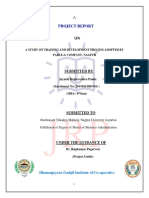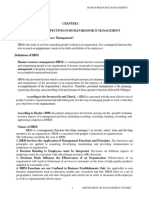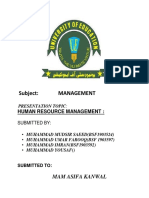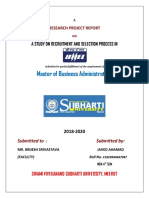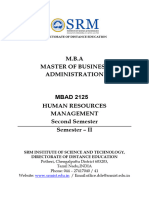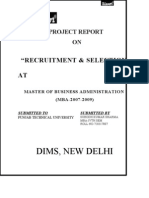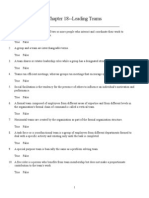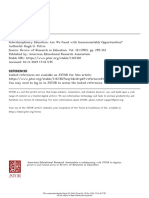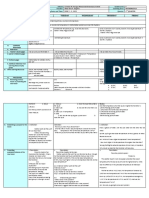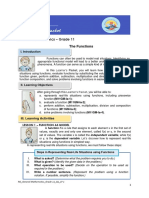A Project
On
MICROTEK COLLEGE OF MANAGEMENT &
TECHNOLOGY
Submitted By Submitted to
Nikki _________
2016-2018
� DECLARATION
I hereby declare that the project report titled “A Study on
“TRAINING AND DEVELOPMENT” submitted by me to the department of
business management, “MICROTEK COLLEGE OF MANAGEMENT &
TECHNOLOGY”, is a Bonafied work under taken by me and it is not
submitted to any other University or Institution for the award of any
Degree/Diploma certificate on any time before.
Signature of the Student
Name and Address of the Student:
Nikki
Durgakund , Varanasi
Date:
1|Page
� ACKNOWLEDGEMENT
I take this opportunity to thank to Principal of “MICROTEK
COLLEGE OF MANAGEMENT & TECHNOLOGY”, for has
encouragement in doing the project work.
I take this opportunity to thank Mrs EKTA MAM Head of the
Department of M.B.A Dept, for has encouragement in doing the
project work.
I would like to thank Mr. ---------------------------- faculty of for has
guidance and suggestion and her kind help and motivation in
completing the project.
I would like to thank Mr. GVN RAMA RAO, Asst.manager HR, and
Institute of Management for his valuable guidance. I also thank
Ms.PRASANNA, my friend, for her guidance and cooperation in
completing this project.
I take the opportunity to express my deep and sincere gratitude to the
management of JERSEY for their gesture of allowing me to undertake
this project and its various employees who lent their hand towards the
completion this study.
2|Page
� INDEX
S.No. Topics Page No
1 Human Resource
Management
Introduction to HRM
Concept
4 Defination
5 Scope of HRM
6 Objectives of HRM
7 Training
8 Need for Training
9 Importance of Training
10 Benefits of Training
11 Benefits in personnel &
human relations, Intra &
Inter-Group Relations &
Policy implementation
12 Need for Training
13 Training Objectives
3|Page
� 14 Assessment of Training
Needs
15 Assessment Methods
16 Principles of Training
17 Areas of Training
18 Training Methods 19-23
19 Benefits of Training 24-26
20 Performance Appraisal, 27
Job Analysis, Making
HR-Communication
effective
21 Findings & Conclusions 28
22 Suggesitions 29
4|Page
� Human Resource Management
Introduction to HRM
Every organization irrespective of its nature and size has four resources namely men,
material, and machinery. Of this men I. e., people are the most vital resources and they only
make all the differences in an organization. In this connection L.F. Urwick says that “Business
houses are made? Broken in the long –run note by the markets or capital, patents, or
equipments, but by men”. Peter F. ducker says that, “man, of all the resources available to
name can grow and develop”. This gives geneses to the concept of HRM, the sub –system. HR
is the central sub-system of an organization. As the central sub- system, it controls the
functions of each sub –system and the whole organization.
.
Concept
Human resource management is concerned with the human beings in an
organization. It reflects a now philosophy, a new outlook, approche and strategy, which views
an organization’s manpower as its resources and assets.
Human resource management is a managerial function which facilitates the effective
utilization of people (manpower) in achieving the organizational and individual goals.
Simply, HRM is a management function that helps the managers to recruit, select,
train and develop the organizational members for the purpose of achieving the stated
organizational goals.
In the present scenario, HRM is used as a synonym to personnel
management and the personnel department is called as hr department.
Definition
5|Page
�HRM is defined as follows,
“The part of management which is concerned with the people at work and with their
relationship within an enterprise. It aims to bring together and develop into and effective
organization of the men and women who make up an enterprise and having regard for the well-
being of the individuals and of working groups, to enable them to make there best contribution
to its success”
-National institute of personnel management, India.
“Human resource management is a series of decisions that affect the
relationship between employees and employers; it affects many constituencies and is intended
to influence the effectiveness of employees and employers”.
- Milkovich l boudreau.
Scope of HRM
HRM has a very vast and wide scope. It is concerned with activities starting from manpower
planning till the employee leaving the organization. Accordingly, the scope of HRM
includes procurement, development, maintenance and control of the personnel in the
organization
The labor as personnel aspect:
If is concerned with manpower planning, recruitment, selection, placement, induction,
transfer, promotion, demotion, terminating, traning and development, lay off and retrenchment,
wage and salary administration, incentives, productivity etc.
1. the welfare aspect:
6|Page
� it deals with working conditions and amenities such as canteens, crèches,
restrooms ,lunch rooms, housing, transport, medical assistance, education, health and safety ,
recreation , washing facilities , cultural facilities etc.
2. the industrial relations aspect
This is concerned with union-management relations, joint consultation,
negotiation, collective bargaining, grievance handling, disciplinary action, settlement
machinery for industrial disputes etc.
HRM includes the following activities under its purview.
● Human resource planning
● Recruitment, selection, and placement
● Orientation, training and development
● Job analysis and design
● Role analysis and role development
● Career planning and communication
● Performance appraisal
● Human relation
● Safety and health
● Wage and salary administration
● Compensation and reward
● Grievance redressal
● Quality of work life and employee welfare
● Organizational change and development
7|Page
� ● Industrial relation
Objectives of HRM
The objectives of HRM are taken from the basic objectives of the organization. For
achieving the organizational goals, it is necessary to employ right people for a right job. The
primary objectives of HRM are to provide right, competent and willing workforce to an
organization. For attaining its primary objective HRM frames the following objectives.
1. To guide the organization in attaining its goals by providing well-trained and
competent personnel.
2. To effectively utilize the available human resources according to the
requirements i.e., to employ the knowledge and skills of the employees in attaining
organizational goal.
3. To develop and maintain motivating. Productive and self- respecting working
relationship among all the organizational members.
4. To develop the individuals up to a maximum extent by providing thim the
necessary training and advancement.
5. To develop and maintain high moral and cordial relations within the
organization.
6. To help to develop and maintain ethical policies and behavior inside and outside
the organization.
7. To manage the change for the advantage of individuals. Groups, the
organization and the society
8|Page
� 8. To recognize and satisfy the individual needs and group goals by providing monetary
and no
Training
Training is concerned with imparting developing specific skills for a particular purpose.
Training is the act of increasing the skills of an employees for doing a particular job
Training is the process of learning sequence of programmed behavior.
In earlier practice , training programme focused more on preparation for improved
Performance in particular job . Most of the trainees used to be from operative levels like
Machines , mechaines operations and other kinds of skilled workers . When the problems
of supervision increased , the step were taken to train supervision foe better supervision.
.Need for training
Need for training arises to
1. Improve performance
2. Improve productivity
3. Improve quality of product/service
4. Improve organizational climate
5. Improve health and safety
6. Reduce resistance to change
9|Page
�IMPORTANCE OF TRAINING:
The importance of human resources management to a large extent depends on human
resources development. H.R.D. is nothing but training of employees and training as its most
important technique. No organization can get a candidate who exactly suits with the job and
the originations requirements. Hence, training becomes necessary is important to develop the
employee and make him suitable the job. Training works towards value additions to the
company through HRD.
Job and organizational requirements are not static rather they are changed dynamic.
From time to time in view of the technological advancement and charge in the awareness of the
total quality and productivity management (TQPM). The objectives of the TQPM can be
achieved only through training, which helps to develop human skills and efficiency. Training
employees would be a valuable asset to an organization.
Organizational efficiency, productivity, progress and development to a greater extent depend
up on training. If the required training is a not provided. It leads to performance, failure of the
employees. Organizational objectives like viability, stability and growth can also be achieved
by providing through training. Training is important, as it constitutes a significant part of
management control.
The training enhances four ‘C’s for the organization viz.
● Competence
● Commitment
● Creativity
● Contribution
10 | P a g e
�BENEFITS OF TRAINING:
How training Benefits the Organization: -
● Leads to improved profitability and or more positive attitudes towards profits,
organization.
● Improves the job knowledge and skill at all levels of the organization.
● Improves the morale of the workforce.
● Helps people identify with organizational goals.
● Fosters authority, openness and trust.
● Improves the relation ship between bosses and subordinates.
● Aids in organizational development.
● Learns from the trainee.
● Helps prepare guidelines for the weak aids in understanding and carrying out
organizational policies.
● Provides information for future needs in all areas of the organization.
● Organization gets more affective in decision-making and problem solving.
● Aids on developing leadership skills motivating loyalty, better attitudes and other
aspects that successful workers and managers usually display.
● Helps keep costs down in many areas, e.g. production, personnel, administration etc.,
● Develops a sense of responsibility to the organization for being competent and
knowledgeable.
● Improves labour management relations.
● Reduces outside consulting costs by utilizing competent internal consulting.
● Stimulates preventive management as opposed to putting out fires.
11 | P a g e
� ● Eliminates sub-optional behaviour (such as hiding tools).
● Creates and appropriate climate for growth and communication.
● Helps employees adjust o change.
● Aids in handling conflict, thereby helping to prevent stress and tension.
Benefits to the individual, which to turn ultimately should benefit the
organization:
● Helps the individual in making better decisions and effective problem solving.
● Though training and development, motivation variables of recognition achievement,
growth, responsibility and advancement are international and operationalised.
● Aids in encouraging and achieving self-development and self-confidence.
● Helps a person handle stress, tension, frustration and conflict.
● Provides information for improving leadership knowledge, communication skills and
attitudes.
● Increase job satisfaction and recognition.
● Moves a person towards personal goals, while improving interactive skills.
● Satisfies personal needs of the trainee (and trainee)
● Provided and the trainee an avenue for growth and say in his/her own future.
● Develops a sense of growth in learning.
● Helps a person develops speaking and listening skills also writing skills when exercised
required.
● Helps eliminate fear in attempting new skills.
Benefits in personnel and human relations, Intra and Inter-Group Relations
and policy implementation:
12 | P a g e
� ● Improves communication between groups and individuals.
● Aids in orientation for new employees and those taking new jobs through.
● Transfer for promotion.
● Provides information on equal opportunity and affirmative action.
● Provides information on other governmental laws and administrative policies.
● Improves inter-personal skills.
● Makes organizations policies, rules, and regulations viable.
● Improves morale.
● Builds cohesiveness in groups.
● Provides a good climate for learning, growth and co-ordination.
● Makes the organization a better place to work and live.
Need for Training:
The need for training arises due to the following reasons:
To march the Employee specifications with the job requirements and
organizational needs. Management finds deviations between employee present
specifications and the job requirements and organizational needs. Training is needed to
fill these gaps by developing and making the employee’s skills knowledge, attitude,
behaviour etc., to the turn of the job requirement and organization
13 | P a g e
� ● Organizational variability and the transformation process:
The primary goal of the organization is that their viability is continuously
influenced by environments pressure. If the organization does not adapt itself to the
changing.
● Technological Advances:
Every organization in order to survive ad to be effective should adopt the latest
technology, i.e. mechanization, computerization and automation. Adoption of latest
technological means and methods will not be complete o enrich tem in the areas of
changing technical skills and knowledge from time to time.
● Organizational Complexity
With the emergence of increased mechanism and automation manufacturing of
multiple products and by-products or dealing in services of diversified lines, extension
of operations, to various regions of the country or in overseas countries, organizations
of most of he companies has become complex. They create him complex problems of
co-ordination and integration of activities adaptable to the expanding and diversifying
situations. This situation calls for training in the skills of co-ordination, integration and
adaptability to the requirements of growth, diversification and expansion.
● Human Relations:
Trends in approach towards personnel managers has changed form the
commodity approach to partnership, crossing the human relations approach. So today
management of most of the organization has to maintain human relations besides
maintaining sound industrial relations although hitherto the managers are not
accustomed to deal with the workers accordingly. So training in human relations is
14 | P a g e
� necessary to deal with the human problems including alienation interpersonal and inter
group conflicts etc
Changes in Job assignment:
Training is also necessary when the existing employee is promoted to the higher level
in the organization and when there is some new job or occupation due to transfer. Training is
also necessary to equip old employees with the advanced disciplines, techniques or technology.
The need for the training also arises to:
■ Increase Productivity
■ Improve quality of the product/Service
■ Help a company to fulfill its future personnel needs.
■ Improve organizational climate.
■ Prevent obsolescence
■ Effect personal growth
■ Minimize the resistance to change and
■ To act as mentor
Training objectives:
The personnel manager formulates the following objectives in keeping with the
company’s goals and objectives.
To prepare employee both old and new to meet the present as well as the changing
requirements of the job and the organization.
a. To prevent obsolescence.
15 | P a g e
� b. To impart new entrants the basic knowledge and skill they neeed got an
intelligent performance of definite job.
c. To prepare employees for higher level tasks.
d. To assist employees to function mote effectively inherit present positions by
exposing them to the latest concepts, information and techniques and developing the
skills they will need in theist particulate fields.
e. To build up a second line of competent officers and prepare them to occupy
more responsible positions.
f. To develop the potentialities of people for the next level job.
g. To ensure smooth and efficient working of department.
h) To ensure economical output of required quality.
I) to promote individual and collective morale, a sense of responsibility co-
operative attitude and good relationships.
ASSESSMENT OF TRAINING NEEDS
16 | P a g e
� Training needs are identified on the basis of organizational analysis, job, analysis and
man analysis. Training program, training methods and course content are to be planned on
the basis of training needs. Training needs are those aspects necessary to perform the job
in an organization in which employee is lacking attitude/aptitude, knowledge and skills.
Training needs = job and organizational requirement- employee
specification.
a. Training needs can identify through identifying.
Organizational needs based on
1. Organizational strength and weakness in different areas.
2. Back drop of organizational objectives and strategies.
b. Works needs based on
1. Jobs to be performed after training.
2. Information about details of working of different jobs.
3. Setting standards of performance of various jobs.
4. Examining of existing methodologies of doing the job to meet the set
standards.
c. Human resource analysis based on
1) Individual employee, his abilities, his skills, his knowledge and attitude.
2) Inputs required for job performance.
3) Individual growth and development in terms of career planning.
17 | P a g e
� ASSESEMENT METHODS:
The following are some of the methods use to assess the training needs.
● Organizational requirements/weaknesses.
● Departmental requirements/weaknesses.
● Job specifications and employee specifications.
● Identifying specific problems.
● Anticipating future problems.
● Managements requests observations
● Interview
● Group conferences
● Questionnaire surveys
● Test or examinations
● Performance appraisal.
Principles of training:
A number of principles have been evolved over the years, which can be
followed as guidelines by the trainees. These are essential in order to promote efficient
learning, long –term retention, application of skill s and knowledge learned in training to the
actual job situation. Some of them are,
a) Motivation
b) Progress information
c) Reinforcement
d) Practice
18 | P a g e
� e) Full vs. part
f) Individual difference
Areas of training
Organization provides training to their employees in the following areas.
a. company policies and procedure
b. specific skills
c. human relations
d. Problem solving
e. Managerial and supervisory skills
f. Apprentice training
Training methods:
On-the-job methods off-the-job methods
1. Job rotation vestibule training
2. Coaching role playing
3. Job instruction lecture methods
4. Step by step training conferences or discussions
5. Committee assignments programmed instruction
19 | P a g e
�ON-THE JOB TRIANING METHOD
This type of training, also know as objective instruction, training, is the most
commonly used method. Under this method, the individual is placed on a regular job and
taught the skills necessary to perform the job. The trainee learns under the supervision and
guidance of a qualified worker instructor. On-the-job training has advantage of giving first
hand knowledge and experience under actual working conditions. While the trainee learns how
to perform the job, he is also a regulars worker rendering the serve for which his paid. The
problem of transfer of the trainee is also minimized as the person learns on the job. The
emphasis is placed on rendering the services in the effective manner rather than learning. How
to perform the job on-the-job training method include job rotation, coaching, job instruction or
stop by step training g and committee assignments.
a. Job rotation: this trainee involves the movement of trainee form one job to
another. The trainee receives job knowledge and gains experience from his supervisor
or trainer in each of the different job assignments. Though this method of trainings
common in training managers for general management position, trainees can also be
rotated from hob to ob in workshop jobs. This method gives an opportunity to the
trainee to understand the problems of employees of other jobs and respect them.
b.Coaching: the trainee is placed under a particular supervisor functions as a
coach in training the individual. The supervisor provides the feedback to the trainee on
his performance and offers his some suggestions for improvement. Often the trainee
20 | P a g e
� shares some of the duties and responsibilities of the coach and relieves his of his
burden. A limitation of this method of training is that the trainee may not have the
freedom or opportunity to ex press his own ideas.
b. Job instruction: this method is also known as step by step training. Under this
method, trainer explains the trainee the ways of doing the jobs, job knowledge and
skills allows hid to do the job. The trainee appraises the performance of the trainee,
provides feedback and corrects the trainee.
c. Committee assignments: under the committee assignment, group of trainees
are given an asked to solve an organizational problem. The trainee solves the problem
jointly. It develops teamwork.
OFF-THE JIB METHOD:
Under the method of training, the trainee is separated from the job situation and his
attention I focused upon learning the material related to his future job performance. Since the
trainee is not distracted by job requirements, he and place his entire concentration on learning
the job rather tan speeding in performing it.
There I sin opportunity for freedom expression for the trainee, the methods are as follows:
a. Vestibule training: in this method, actual work conditions are simulated in a
classroom. Materials, files and equipments those are used in actual job performance are
also used in training. This type of raining I commonly used for training personnel for
21 | P a g e
� clears and semi skilled jobs. The duration of this training ranges from days to a few
weeks theory can be related to practice in this method.
b. Role playing: it I s defined as human interaction that involves realistic
behavior in imaginary situations. This method of training involves action, doing and
proactive. The participant play the role of certain characters, such as production
manager, mechanical engineer, maintenance engineer, superintendents, quality control
inspectors, fore men. Workers and the like. The method I mostly used to develop
interpersonal interactions and effectively ion.
c. Lecture method: the lecture is a traditional method and direct method of
instruction. The instruction organizes the material it to a group o trainees in the form of
a talk. To be effective the lecture must motivate and create interest among the trainee
an advantage of lecture method it is direct and can bi used for large group o trainees.
Thus cost and tin=me involved are reduced. The major limitation of the lecture method
is that it does not provide for transfer of training effectively.
d. Conference: it is a method obtaining the clerical, professional and supervisory
personnel. This method involves a group of people who pose ideas, examine a those
facts, ideas and data, test assumptions and draw concussions, all of which contribute to
the improvement of job performance.
e. Programmed instruction: in recent years this method has become popular. The
subject matter to be learnt is resents in a series of carefully planned sequential units.
22 | P a g e
� These units ate arranged from simple to more complex levels of instructions. The
trainee goes though these units by answering questions or filing the blanks. This
method is expensive and consuming.
f. Evaluation of training programme: the specification of values forms a basis
of evaluation. The basis of evaluation and the mode of collection of information
necessity for evaluation should be determined at the planning stages the process of
training evaluation has been defined as “any attempt to obtain information on the
effects of training performance and to asses the also of training ting the light of than
information”. Evaluation is crucial in ascertaining whether or not the training program
is providing to be effective and its objectives ate being achieved. Evaluation leads
controlling and coercion the training programs. Humbling suggested five levels at
which evaluation of training cal take palaces. They are reactions, learning, job
behavior, organization, ultimate value.
g. Feedback: training evaluation information should be provided to the trainers
and instructors, trainee’s ads all other parties concerned for control, corrections and
improvements of trainees activities. Further the training evaluator should follow it up
to ensure implementation of the evaluation report at every state. Feedback info maroon
can be collected on the basis of questionnaire or through interview.
Benefits of training:
Training is important as it is the most significant part of management control. Training
facilitates the management to achieve its organizational goals effectively by the effective
23 | P a g e
�utilization of human resources. Training g is benefices to both employees and the organization
in the following ways.
Benefit to the organization: training is advantageous to the organization in the following
ways.
a. improved productivity:
Training helps the employees to improve their performance
level. A well trained employee can perform a task/activity at a faster rate and accurately by
using better methods of work. This improvement in manpower performance helps the
organization to achieve high and improved productivity.
b. Improved quality of work:
In training programmed, employees ate taught standardized and better
methods of performing activities. Well trained employees ate less likely to make
functional mistakes. This proficiency of employees facilitates the organization to improve
the quality of work.
c. Cost and wage reduction:
Trained employees perform less functional /operational mistakes and
make more economical use of materials and machinery. This reduces wastages and results
in increased productivity with high quality and reduction in cost per unity. Training even
reduces the maintenance cost due to fewer machine breakdowns and better handling of
equipments.
24 | P a g e
� d. Reduced supervision:
A well trained employee tends to be self-supportive, highly motivated and
requires less assistance and control. This reduces the supervisor’s burden and in turn
increases the span of supervision.
Organization provides training to their employees in the following areas.
a. company policies and procedure
b. specific skills
c. human relations
d. Problem solving
e. Managerial and supervisory skills
f. Apprentice training
Reduced accidents:
Training reduces the frequency of accidents because a well trained employee
adopts the right and safety work methods. Even the health and safety of employees can be
improved.
h. Employee growth and high morale;
Training enhances the knowledge and skills of employees guiding them to grow
faster in their career. This facilitates the organization to achieve its goals effectively.
Proper training develops positive attitude among employees and this improves the morale
25 | P a g e
� and job satisfaction. Training even reduces the grievances as a well trained employee I
given the opportunity of promotion and job security.
i. improved organizational climate:
A sound programmed improves the organizational climate including, harmonious
industrial relations, improved discipline, decentralized authority, participative
management, reduced resistance to change and organizational stability.
Thus, it can be concluded that training is an investment in people and a systematic
training is a sound business investment.
HRIS:
Human resource information system is systematic procedure for collecting, storing,
maintain, and retrieving data need by an organization about its human recourse and various
activities that ate relevant for their management.
HRC:
In the present highly complex environment , HR counseling has become drive
responsibility of HR manager as counseling plays vital role in different aspects of managing
human resource like career planning and development , performance management , stress
management, and other areas which may effect employees emotionally. The basic objective of
counseling is to bring an employee back to his normal mental position in which he was before
the emotional problem emerged.
PERFORANCE APPRAISAL
26 | P a g e
�Performance appraisal is the systematic evaluation of the individual with regard to his or her
performance on the job and his potential for development.
JOB ANALYSIS:
Job evaluation process starts with the base provide by job analysis. Job analysis
identifies various dimensions of a job in two forms, job description and job specification. Job
descriptions provide responsibility involves in the performing of the job while job
specifications provides attributes required in the job performer
MAKING-HR-COMMUNICATION EFFECTIVE:
It is essential that special efforts ate taken to make HR communication effective. These
efforts are need because HRC suffers due to operation of a number of barriers against it which
are as follows.
● Inadequate appreciation of need for HRC by the organization
● Inadequate appreciation of what is to be communicated.
● Tendency of keeping HR policies and practices confidential.
● Language problem in the case of multi-lingual composition of
workforce.
● Cost involved in HR communication.
FINDINGS & CONCLUSION
27 | P a g e
� ● 1. Organization should focus on the benefits that are aimed towards self -
improvement since of the employees satisfied.
● 2. Opportunities for career growth and the security for job is good
● 3. Organization provides training programmes on the basis of employee
performance.
● 4. Organization training programmes are effective.
● 5. The relationship between employee and management is good at Work
place.
● 6. In organization employee almost depend on HR department for Training
programmes.
SUGGESTIONS
1. Along with training programmes organization should provide some other motivational
programmes
2. Implement training institutions at near the organizations
28 | P a g e
�3. Evaluate cost of training and its result of training.
4. Frame the training programes chart and proper care should be taken while conducting the
training.
5. A proper performance appraisal system should be adopted.
6. in my opinion if the above suggestions are followed total training programme.
7. Feedback must be collected from the entire trainer
8. Organization should provide immediate supervisor solving employee’s problem
29 | P a g e
